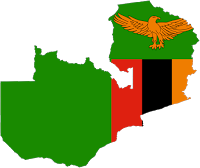ZAMBIA: To Counter Climate Change, Support Agroecologist-Caritas Zambia

In the wake of climate change effects on Agriculture, Caritas Zambia has recommended support more sustainable, low emission agriculture such as Agroecologist.
This is to stop communities going hungry, and help them cope better with more floods and droughts caused by climate change.
Caritas Zambia program specialist Musamba Mubanga has said that the government should focus public spending on agriculture in a non-copper economy and improve rural livelihoods and prioritise climate resilient and sustainable agriculture (Agroecology) in adaptation plans, and ensure that adaptation funding is channeled to support small-scale sustainable farming.
Ms. Mubanga adds that small-scale agriculture must be a priority for government spending.
“In Zambia, three quarters of the population are employed in agriculture, contributing about 9 percent of GDP. There is little mechanical irrigation and the majority of farms are dependent on rain-fed growing cycles. The country is uniquely endowed with resources rich for agricultural development, which if harnessed fully, would enable the country to become the breadbasket of East and Southern African region,” she said.
She however noted that almost 50 percent of Zambia’s population is food insecure and the agricultural sector is increasingly vulnerable to droughts, floods and extreme water shortages brought about by climate change saying more needs to be done to ensure the sector adapts and develops sustainably.
The Caritas Zambia program specialist also said that though the Zambian Government has identified sustainable farming approaches such as conservation agriculture and organic farming as important in several policies, it has not matched it with adequate funding and implementation.
“The funding priorities tend to be politically motivated, such as the Farmer Input Support Programme (FISP) and the Food Reserve Agency (FRA) and biased towards conventional maize production and marketing. Decision-making needs to be made at the local level and communities need to be better informed on how adaptation financing is spent and how they can hold the government to account. The government also needs to build capacity and understanding at a local level – involving local governments and community members – to equip them to plan and implement adaptation projects,” she said.
Caritas Zambia has also recommended that there should be investment in adaptation measures to ensure communities’ resilience to the impacts of climate change and include civil society in decision-making regarding adaptation finance.
“The Government of Zambia should use every opportunity to call on developed countries to keep their promise to provide $100 billion a year in financial support, by 2020, to help developing countries tackle climate change. It should also ensure the participation of civil society in decision-making regarding adaptation finance while Smallholder farmers, particularly women and landless laborer’s, must be actively involved in designing policies and programmes for sustainable resilient smallholder agriculture,” Ms. Mubanga added.
In a write up Ms. Mubanga noted that Zambia must continue to call on developed countries to deliver the promise of $100 billion a year which is needed globally to help developing countries adapt and develop sustainably.
Zambia’s small-scale farmers urgently need support to invest in sustainable and resilient farming methods. This support includes the provision of extension services to help farmers diversify to more resilient crops and learn new farming approaches such as agroecology. It includes funding for agricultural research to develop new technologies and practices. It also includes investment in infrastructure for small-scale farmers such as irrigation.
Rich countries promised this in 2009, to be mobilized by 2020.
The effect of climate change is already affecting temperatures and precipitation in Zambia. Warming has been especially noticeable during the winter months. According to Zambia’s Meteorological Department, the 2016 high temperatures ranging from 30°C to 38°C across the country attest to the fact that was established in 2006 of increasing temperatures. Furthermore, Zambia’s average annual rainfall decreased by an average rate of 2.8 mm per month per decade since 1960, primarily due to decreases in rainfall from December to February and this has greatly affected crop production and household food security.
By Mwenya Mukuka, ZCCB Communications Officers


